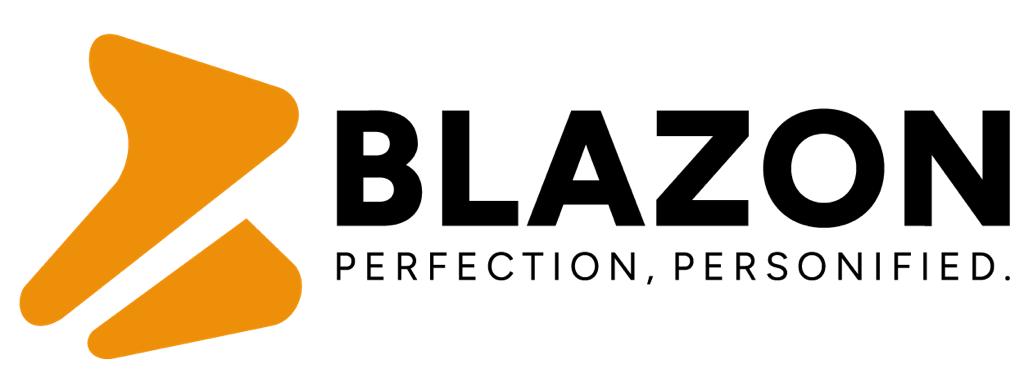Selecting the right e-commerce platform is crucial for your business success, especially in India’s unique and fast-growing market. Here’s a quick summary of the 5-step process to help you decide:
- Define Your Business Needs: Identify your goals, product types, and future growth plans.
- List Essential Features: Prioritise Indian-specific needs like UPI, GST compliance, and regional language support.
- Review Costs: Understand setup, maintenance, and operational expenses in INR.
- Check Technical Support: Ensure 24/7 help, local integrations, and reliable service.
- Test User Experience: Focus on mobile optimisation, smooth navigation, and localised features.
How to Choose an Ecommerce Platform: 10 Key Considerations
Step 1: Define Your Business Requirements
Start by understanding your business needs to ensure your platform supports your current operations and can scale with future growth.
Set Clear Business Goals
Your platform requirements depend on your business model. Here’s what to focus on:
- Physical Products: Look for inventory management and shipping integration features.
- Digital Downloads: Prioritise secure systems for digital delivery.
- Subscription Services: Ensure support for recurring billing and membership management.
Review Product Portfolio
Assess your product catalogue to identify the platform features you’ll need. Inventory size plays a key role:
- Small catalogue (1–100 products): Basic inventory tools should suffice.
- Medium catalogue (101–1,000 products): Features like advanced categorisation become important.
- Large catalogue (1,000+ products): Opt for platforms with robust inventory management systems.
Data from 2021–2022 highlights that eCommerce adoption in smaller cities and towns outpaced metro areas. This trend emphasises the need for features like multi-language support and regional payment options to widen your market reach.
Plan for Business Growth
Planning ahead can save you from expensive platform migrations. Here’s what to consider:
| Growth Factor | Planning Consideration |
|---|---|
| Sales Volume | Ensure the platform can manage 3–4× your current transaction volume. |
| Market Expansion | Look for support for multiple currencies and regional tax systems. |
| Product Lines | Choose a platform that allows adding new product categories easily. |
| Integration Needs | Ensure API capabilities for connecting future tools. |
Many successful Indian eCommerce stores start with plans costing around ₹1,499 per month and upgrade later as they scale. This allows for market testing while keeping costs manageable.
Key Growth Indicators to Track:
- Monthly order volume
- Peak traffic handling capacity
- Storage needs for product media
- Number of staff accounts required
Platform limitations often surface only after hitting certain thresholds. Planning for at least 12 months of expected growth can help you avoid switching platforms prematurely.
Step 2: List Must-Have Platform Features
Identify the key features your e-commerce platform needs to meet your business goals and cater to the Indian market.
Basic Platform Functions
Your platform must include core features tailored to Indian business needs. These include:
-
Product Management
- Bulk product upload
- Support for multiple variants and attributes
- Stock tracking with low inventory alerts
- Product bundling options
-
Order Processing
- Automated order status updates
- Invoice generation with GST details
- Streamlined return and refund management
- Integration for order tracking
An analytics dashboard is also essential for tracking performance metrics.
Indian Market Requirements
To succeed in India, your platform must address local needs. Key features include:
| Feature Category | Key Elements |
|---|---|
| Payment Methods | UPI, Net Banking, Cards, COD |
| Language Support | Multi-language content options |
| Tax Compliance | GST calculation and filing |
| Regional Settings | INR currency display, Indian date formats |
Mobile Optimisation
Given the popularity of mobile commerce in India, your platform must prioritise mobile performance with:
- PWA (Progressive Web App) support
- Fast 4G loading speeds
- Mobile-first checkout process
- WhatsApp integration for updates
The next step is ensuring your platform connects seamlessly with essential business tools.
System Connections
Your platform should integrate with tools that enhance efficiency:
Shipping and Logistics
- Integration with major courier services
- Pin code serviceability checks
- Automated shipping label generation
- Real-time delivery tracking
Marketing and Analytics
- Email marketing tools
- Social media integration
- Analytics platforms like Google Analytics
- Customer segmentation features
"Easily integrate your web store with ERP, order management, fulfillment, and other systems to accelerate the delivery and purchase experiences across any touch-point."
– Virtina.com
Payment Processing
- Integrated payment gateways
- Multi-currency support
- Automated reconciliation
- Advanced fraud detection
To handle high transaction volumes during peak seasons like festivals, ensure your platform is scalable. Regular updates and PCI DSS compliance are crucial for keeping customer data secure.
sbb-itb-aa47676
Step 3: Review Costs and Growth Limits
Once you’ve identified the key features you need, it’s time to evaluate the costs and scalability of the platform to ensure it meets both your current needs and future plans.
Total Cost Breakdown
Here’s a breakdown of typical costs in the Indian market:
| Cost Component | Typical Range (Annual) | Notes |
|---|---|---|
| Platform License | ₹4,000 – ₹10,000 | From basic to premium plans |
| Website Development | ₹10,000 – ₹10,00,000 | Depends on complexity |
| Monthly Maintenance | ₹12,000 – ₹60,000 | Includes security, updates, support |
| Payment Gateway Fees | 2-3% per transaction | |
| Third-party Integrations | ₹5,000 – ₹25,000 | Apps and plugins |
Don’t forget to include costs for GST compliance tools and regional payment gateway integration, which are important for businesses in India.
Growth Capacity
Your platform should be able to handle increased traffic and activity, especially during peak times like Diwali. Key areas to consider include:
- Inventory Management: The system should support growing product catalogues, manage multiple warehouses, and provide real-time stock updates.
- Performance Under Load: Ensure the platform maintains fast load times even with high concurrent users.
With over 94% of global internet users making online purchases last year, having a platform that can scale as demand grows is crucial.
Cost Comparison Method
To compare platforms effectively, follow these steps:
- Calculate Fixed Costs: Include platform fees, hosting, and essential integrations. Basic website maintenance typically costs ₹1,000 to ₹5,000 per month.
- Estimate Variable Costs: Account for payment gateway fees, extra storage, and additional bandwidth.
- Project Incremental Costs: Factor in costs for user licenses, advanced support, new features, and infrastructure upgrades.
Given that the Indian e-commerce market is expected to hit $80 million by 2025, selecting a platform that can grow with you – while keeping costs manageable – is key to maintaining profitability. This framework allows for a clear comparison of options while planning for future expansion.
Step 4: Check Technical Support and Add-ons
After evaluating costs and growth potential, it’s time to focus on the platform’s technical support and add-ons. These elements are crucial for smooth operations, especially in the Indian market.
Connection Options
Look for platforms that integrate easily with payment and logistics systems popular in India. Here’s a quick overview:
| Integration Type | Key Features | Examples |
|---|---|---|
| Payment Gateways | Digital payments, banking | Payment processors |
| Logistics | Pin code verification, COD | Courier services |
| Business Software | GST compliance, inventory tools | Business management tools |
Most platforms come with built-in support for options like COD, credit cards, debit cards, net banking, PayPal, and marketplace integrations.
Support Services
Reliable technical support is essential for uninterrupted operations. Evaluate the following:
- Support Hours: Ensure 24/7 availability that aligns with Indian business hours.
- Communication Channels: Look for support in English and regional languages.
- Response Time: Check if they provide clear timelines for issue resolution.
To gauge support quality, try these steps:
- Reach out to their helpdesk during Indian business hours.
- Test their ability to assist in your preferred language.
- Review their India-specific documentation for clarity and relevance.
Good support ensures smooth integration of add-ons, keeping your operations on track.
Add-on Availability
Choose a platform that offers a wide range of integrations and customisable add-ons, such as:
- Payment Extensions: Support for Indian payment gateways.
- Shipping Modules: Connections to local courier services.
- Marketing Tools: Compatibility with social media and marketplaces.
Platforms with active developer communities and frequent updates to their add-on ecosystem are ideal. This ensures you’ll have access to new tools and features as market needs change.
Step 5: Test User Experience and Local Features
Platform Usability
A well-designed user interface can make or break a business. Research shows that 75% of visitors judge a website’s credibility based on its appearance. Pay attention to these key areas:
| Feature | What to Check | Why It Matters |
|---|---|---|
| Homepage Navigation | Category structure, search bar placement | Helps users find products easily |
| Mobile Responsiveness | Touch areas, image zoom, menu access | Improves shopping on mobile devices |
| Dashboard Layout | Order management, inventory updates | Simplifies business operations |
Did you know? 23% of shoppers abandon their carts due to a complicated checkout process, especially during busy hours.
Now, make sure the platform meets the specific needs of the Indian market.
Indian Market Features
For success in India, ensure the platform supports:
- Regional languages alongside English for wider accessibility.
- Local payment methods like UPI, net banking, and cash on delivery (COD).
- GST-compliant tax and invoice features to meet regulatory requirements.
For instance, Truckers Toy Store saw a 22.3% increase in mobile conversions after focusing on mobile optimisation.
Lastly, check if the design resonates with local users while staying true to the brand.
Design Options
Evaluate these design aspects:
- Template Customisation: Templates should allow easy adjustments to reflect local culture and seasonal trends without requiring extensive coding.
- Visual Elements: Ensure the platform supports high-quality images, INR currency displays, localised content, and mobile-friendly layouts.
- Performance Features: Test how fast the site loads during peak Indian shopping hours (8 PM to 11 PM IST).
"44% of shoppers will tell their friends about a bad online experience." – Neil Patel
A strong design combined with reliable performance can enhance the user experience and drive business growth.
Conclusion
Choosing the right e-commerce platform is a big decision that can shape your business’s success in India. By carefully reviewing the steps outlined earlier, you can align your platform with your business needs and future goals, ensuring smooth day-to-day operations.
| Key Factor | Impact on Your Business |
|---|---|
| Business Requirements | Defines the essential tools and features you need |
| Platform Features | Supports seamless operations and better customer experience |
| Cost Structure | Impacts your long-term financial planning |
| Technical Support | Keeps your business running without interruptions |
| User Experience | Encourages customer loyalty and boosts sales |
These considerations play a crucial role in your final decision. Evaluating everything – from the basic requirements to how the platform caters to local users – gives you confidence in your choice.
Start by focusing on the features you need right now, and then expand as your business grows. When testing the platform, prioritise what works for your specific needs instead of just following trends. This strategy will help you grow steadily while keeping your operations efficient.


